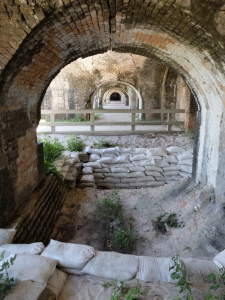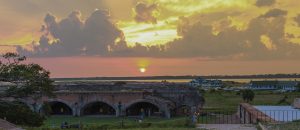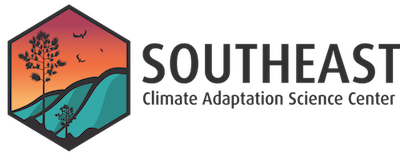New Report: Testing the Transferability of the Optimal Preservation Model at Gulf Islands National Seashore
A SE CASC research team comprised of Erin Seekamp, Xiao Xiao, Max Post van der Berg, and Mitch Eaton were supported by National Park Service to continue development of the Optimal Preservation (OptiPres) model, a climate adaptation planning and decision support framework for historic structures and product of SE CASC project Protecting Cultural Resources in the Face of Climate Change, through application to another coastal site managed by NPS. They recently published study results in Natural Resource Report NPS/GUIS/NRR—2021/2303, Testing the Transferability of the Optimal Preservation Model at Gulf Islands National Seashore.

While not designed to be prescriptive, the OptiPres Model enables insights about the tradeoffs that would be necessary to maximize the accumulated resource value of all historic structures within a specified landscape under different fiscal allocation scenarios (see Optimizing Cultural Resource Preservation Under Climate Change.)
Using an optimization algorithm, the OptiPres Model evaluates trade-offs between:
- Investing in actions that maintain or preserve resources in situ,
- Investing in actions that preserve a structure by elevating it higher than its original location,
- Making triage decisions to free-up resources for more costly actions, or
- Making triage decisions that shift management attention from one type of historical resource to other types of historical resources.
Application of the OptiPres Model at Gulf Island National Seashore (GUIS) allowed for the assessment of how well the model functions for multiple types of structures, such as wooden buildings and masonry buildings, forts, and batteries, assuming the objective is to maximize total resource value of structures within Pensacola Harbor Defense Project Historic District over a 30-year planning horizon. Adaptation actions considered in this setting were core and shell preservation using historic materials, elevating the structure in situ, document and monitor, and active removal.
Some of the Key Findings from the report:
Transferability Test
The study results support that the OptiPres Model is:
- Transferable for use in other coastal NPS units with structures vulnerable to sea level rise and storm-related flooding and erosion.
- Transferable to evaluate adaptation strategies to preserve diverse types of historic structures.
- Locally adaptable to integrate park-level value judgments about the relative importance of resource value (significance and use potential) attributes.
Scenario Results
The findings of the OptiPres Model at GUIS suggest:

- Spending any money to manage even a subset of structures is better than doing nothing.
- Spending more money leads to improved management performance.
- Insufficient budget allocations can drastically lower the accumulated resource value within a historic district.
- Surges in budget allocations (+ “periodic funding increase” budget scenarios) may reduce a structure’s sensitivity.
- Triage decisions for lower-valued structures may be necessary to maintain higher-valued structures.
- Avoiding deterioration of historic structures to poor condition class is optimal.
- Undesirable management outcomes are possible when budgets are insufficient.
- Some coastal NPS units may not be suitable for adaptation.
The research team updated the original algorithm of the OptiPres Model to enable more realistic depictions of the (a) dynamics associated with a structure’s use potential when annual maintenance is withheld or reinstated and (b) typical cycles during which a structure might require core and shell preservation actions. They identified future modifications to improve the decision model based on this study, such as:
(1) Enhancing and standardizing cost estimates for adaptation actions,
(2) Integrating probabilistic events such as hurricanes and post-storm recovery dynamics,
(3) Testing more complex objective functions, and
(4) Refining the ability to elicit and include stakeholder input.
Seekamp, E., X. Xiao, M. P. van der Burg, and M. Eaton. 2021. Testing the transferability of the optimal preservation model at Gulf Islands National Seashore. Natural Resource Report NPS/GUIS/NRR—2021/2303. National Park Service, Fort Collins, Colorado. https://doi.org/10.36967/nrr-2287401.
- Categories:
